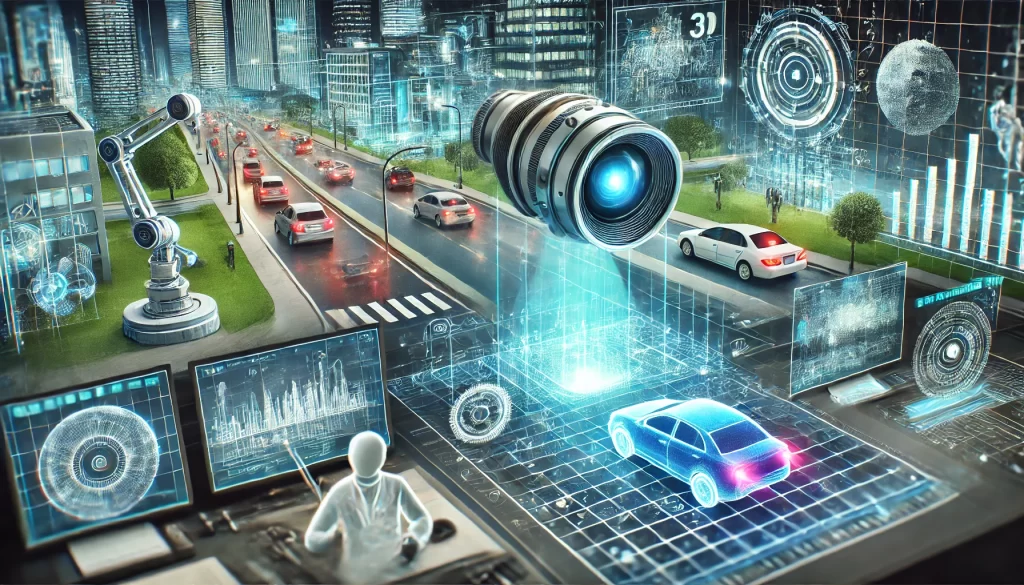Artificial Intelligence (AI) has significantly enhanced 3D camera technology, transforming the way machines perceive depth and spatial information. From gaming to healthcare, AI-powered 3D cameras are unlocking new possibilities by delivering accurate, real-time 3D data analysis.

The new research study consists of an industry trend analysis of the market. The growth of the 3D camera Market is propelled by wide applications of 3D imaging, increasing adoption of industrial robots, and rising demand for 3D cameras in construction. However, the high cost of 3D cameras and technological limitations are restraining factors for the growth of this market. The growth of AR/VR, advancements in 3D printing, and integration of machine learning in 3D cameras are key growth opportunity for players in the market.
What is an AI 3D Camera?
An AI 3D camera is a device that captures three-dimensional images or videos of objects and environments, augmented by artificial intelligence. Unlike conventional cameras that only capture 2D images, 3D cameras provide depth information. AI algorithms process this data for various applications, enabling advanced capabilities such as object recognition, motion tracking, and scene analysis.
How AI Enhances 3D Camera Functionality
- Real-Time Data Processing: AI ensures rapid processing of 3D data, allowing cameras to operate seamlessly in dynamic environments. This capability is critical for real-time applications like robotics and autonomous vehicles.
- Enhanced Depth Sensing: AI improves depth measurement accuracy by filtering noise, correcting distortions, and refining outputs in challenging scenarios like low light or high-speed motion.
- Object Recognition: AI algorithms integrated into 3D cameras enable precise identification of objects, even in cluttered or complex scenes.
- Scene Understanding: AI helps analyze spatial data to comprehend environments, identify obstacles, and plan actions accordingly, a crucial feature in automation and navigation.
Applications of AI 3D Cameras
- Autonomous Vehicles:
- AI-powered 3D cameras aid in mapping surroundings, detecting pedestrians, and avoiding collisions.
- These cameras are essential for lane detection and traffic sign recognition.
- Healthcare:
- 3D cameras with AI assist in surgical navigation, enabling minimally invasive procedures.
- They are used in physical therapy to monitor and analyze body movements.
- Retail and E-commerce:
- AI 3D cameras enable virtual fitting rooms by creating accurate 3D models of customers for personalized clothing recommendations.
- In logistics, they streamline warehouse management by accurately measuring package dimensions.
- Gaming and Entertainment:
- Virtual reality (VR) and augmented reality (AR) systems leverage 3D cameras for immersive experiences.
- Motion capture for gaming and filmmaking is enhanced by AI’s ability to track movements in detail.
- Manufacturing:
- In quality control, AI 3D cameras inspect products for defects and ensure precision in assembly lines.
- They enable predictive maintenance by detecting wear and tear in machinery.
- Agriculture:
- AI 3D cameras monitor crop health, measure growth, and identify pests or diseases.
- They support autonomous farm equipment in navigation and task execution.
Advantages of AI 3D Cameras
- Accuracy: AI algorithms improve the precision of 3D imaging, making it reliable for critical applications.
- Efficiency: Real-time processing minimizes delays, enhancing operational efficiency in industries like robotics and automation.
- Cost-Effectiveness: By automating tasks like inspection and analysis, AI 3D cameras reduce labor costs and time investments.
- Versatility: These cameras can adapt to various environments, from industrial settings to outdoor terrains.
Challenges and Future Prospects
- High Costs: Advanced AI 3D cameras are expensive, limiting their accessibility for smaller businesses.
- Complexity: Integrating AI 3D cameras into existing systems requires expertise in both hardware and software.
- Data Privacy: As these cameras capture detailed spatial data, ensuring user privacy and secure data handling is paramount.
The future of AI 3D cameras is bright, with emerging technologies like edge computing and neuromorphic chips promising to make them even more efficient. Innovations in AI training and advanced sensors will further expand their capabilities, enabling new applications in smart cities, personalized healthcare, and beyond.
AI 3D cameras represent a significant leap forward in machine perception, combining depth sensing with the intelligence of AI. As industries continue to embrace automation and smart systems, these cameras will play a pivotal role in shaping the future of technology, making our interactions with machines more intuitive and impactful.
